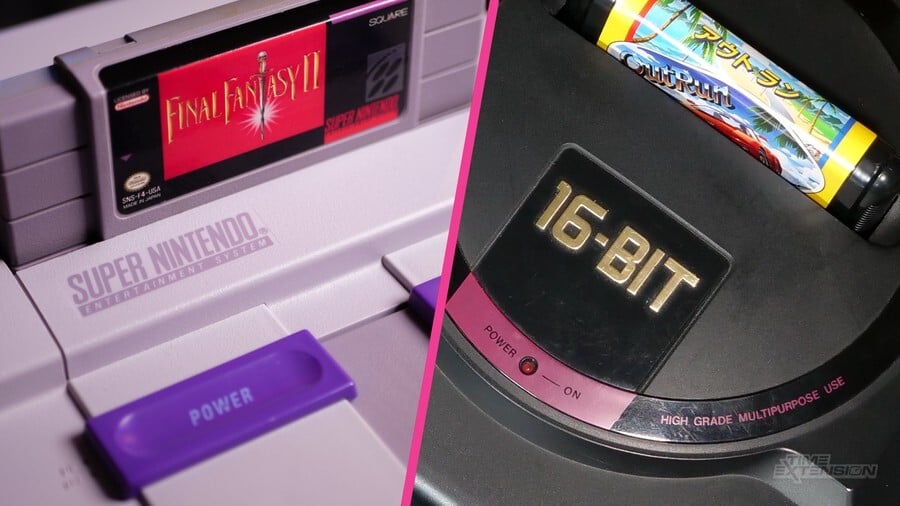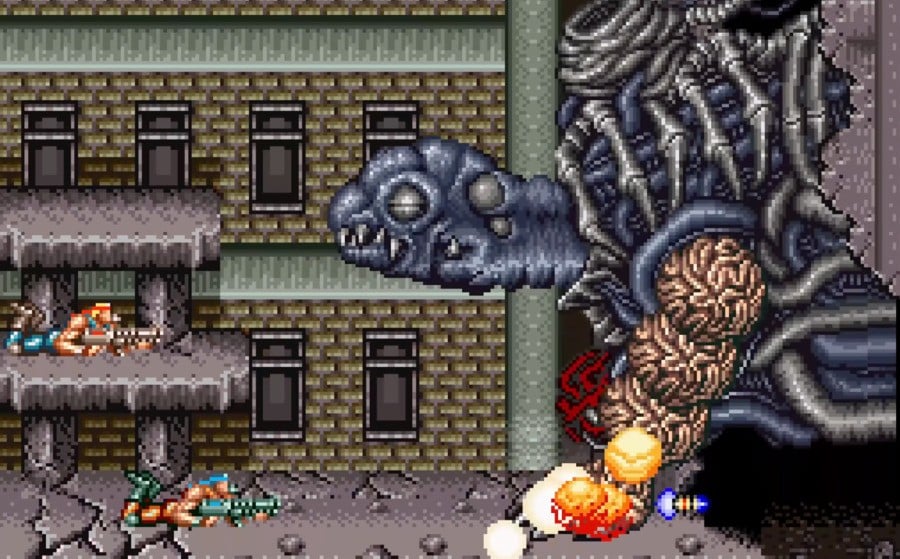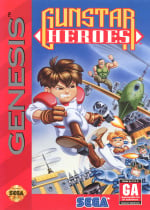
Even though the 16-bit console war ended decades ago, there are still people who care deeply about which machine is 'best': Sega's Mega Drive / Genesis or Nintendo's SNES.
In terms of raw sales, Nintendo was the clear victor – it sold 49.10 million SNES consoles compared to 30.75 million Mega Drive / Genesis systems. When it comes to software, though, the choice is very much subject to personal opinion; the SNES was flooded with amazing RPGs, while Sega's console arguably specialised in intense shmups and sports games.
On a purely technical level, both platforms had their own unique strengths and weaknesses. The SNES had better sound, could display more colours on-screen (from a larger palette, too) and boasted the ability to rotate background layers and use transparency effects – the latter two being things that were entirely absent from the Mega Drive / Genesis' skillset. On the other hand, Sega's 16-bit console had a faster CPU, the Motorola 68000 – and that made a huge difference to the developers at Treasure, the Japanese studio formed by ex-Konami coders in 1992.
John Harrison's new book, Legends Of 16-Bit Game Development, looks back over the six games Treasure produced for the Mega Drive in the '90s. In it, Harrison translates interviews with key Treasure staffers, and one of the topics that comes up is the Mega Drive's advantage over its 16-bit rival.

Hideyuki Suganami, who served as enemy programmer on Treasure's explosive debut, Gunstar Heroes, explains what makes Sega's hardware so appealing to him:
The 68000 is great. It's much better than the 65816 [the SNES CPU]. Its instructions are easy to understand, and it's fast. When you do multiplication, you don't have to jam a bunch of NOP ["No Operation"] instructions in there. The Mega Drive is truly a wonderful machine with a CPU like this.
Suganami worked as a programmer under fellow Treasure staffer Mitsuru Yaida on Contra III while both of them were at Konami, and is therefore well-placed to compare the relative merits of both systems. Contra III is a visual feast on Nintendo's system, boasting massive bosses, huge explosions and an incredible variety when it comes to gameplay mechanics.
Given that the Gunstar Heroes team featured staff who had worked on Contra III, it's understandable that Treasure saw the Konami classic as a template for what it wanted to achieve with its Mega Drive debut.
One of Gunstar Heroes' most famous boss fights illustrates why Treasure's programmers loved the machine so much. Seven Force, which appears during the game's second level, adopts seven different forms during battle. The character is made up of multi-jointed segments which are used to give the impression of smooth animation in the days before 3D became the norm – a process which, back in the days of 16-bit consoles, was tricky to achieve convincingly due to the calculations involved.
Each segment had to relate to other segments in order to give the impression of movement. This could be achieved in two ways; the first required the programmer to create a table of data – known as a "look-up table" – and store it in the ROM so the program could look up the relative position of each segment during any given frame of animation. This reduced the calculation load on the CPU but meant that the data would soak up valuable ROM space; animations would also be 'canned' and could not be altered or changed by other events in-game.
The other option was to use the CPU to calculate the relevant position of each segment in real-time. This was Suganami's preferred option:
If you store all of the movement patterns as data, then yeah, the processing is fast and the appearance is probably quite realistic, but that data is going to take up a huge amount of memory. I am firmly against this above all else. Multi-jointed characters have flavour because their movement is calculated in real-time!
Masato Maegawa, Treasure's president, elaborates on why this kind of fluid animation was only really possible on a console like the Mega Drive:
On the SNES, it was more difficult to implement lots of multi-jointed movement. The SNES wasn't as good at multiplication, so you'd have to store character movement patterns as data. Since the Mega Drive was good at multiplication, you could do the movement calculations in the program. For the hardware of the time, it was a big deal. Multi-jointed movement on the Mega Drive looked very smooth.
As Harrison explains in the book, both the SNES and Mega Drive performed calculations at roughly the same speed, but Sega's machine was able to multiply two 16-bit values together, while the SNES could only multiply two 8-bit values together – or, if using its GPU, an 8-bit value and a 16-bit value. This, Harrison believes, is why SNES programmers often decided against doing real-time movement calculations using multiplication on Nintendo's console and is why a boss like Seven Force could never have been achieved on the system (at least not without additional hardware assistance).
Ultimately, though, Treasure's affection for the Mega Drive / Genesis came out of a desire to make the underdog console truly sing. "The Mega Drive is excellent," said Suganami in a 1994 interview from Beep! Mega Drive, translated by Harrison. "You see, the number of colours is limited and sprite flicker can be severe. The hardware also doesn't support things like background scaling and sprite transparency (unlike the SNES). And that's what makes the Mega Drive wonderful. To avoid losing to other consoles, we developers have to push our skills to new levels and come up with all kinds of creative ideas. It actually gives us more motivation to succeed. When you reach a certain point, it becomes fun to consider the question, 'How can we overcome the Mega Drive's weaknesses?'"
Gunstar Heroes, despite being Treasure's first game, has gone down as one of the studio's finest achievements. It was released as part of Sega's 3D range on the Nintendo 3DS and has been included on the Mega Drive Mini micro-console. It got a sequel / remake on the GBA in 2005, with original developers Hideyuki Suganami and Tetsuhiko Kikuchi involved.
Please note that some external links on this page are affiliate links, which means if you click them and make a purchase we may receive a small percentage of the sale. Please read our FTC Disclosure for more information.

